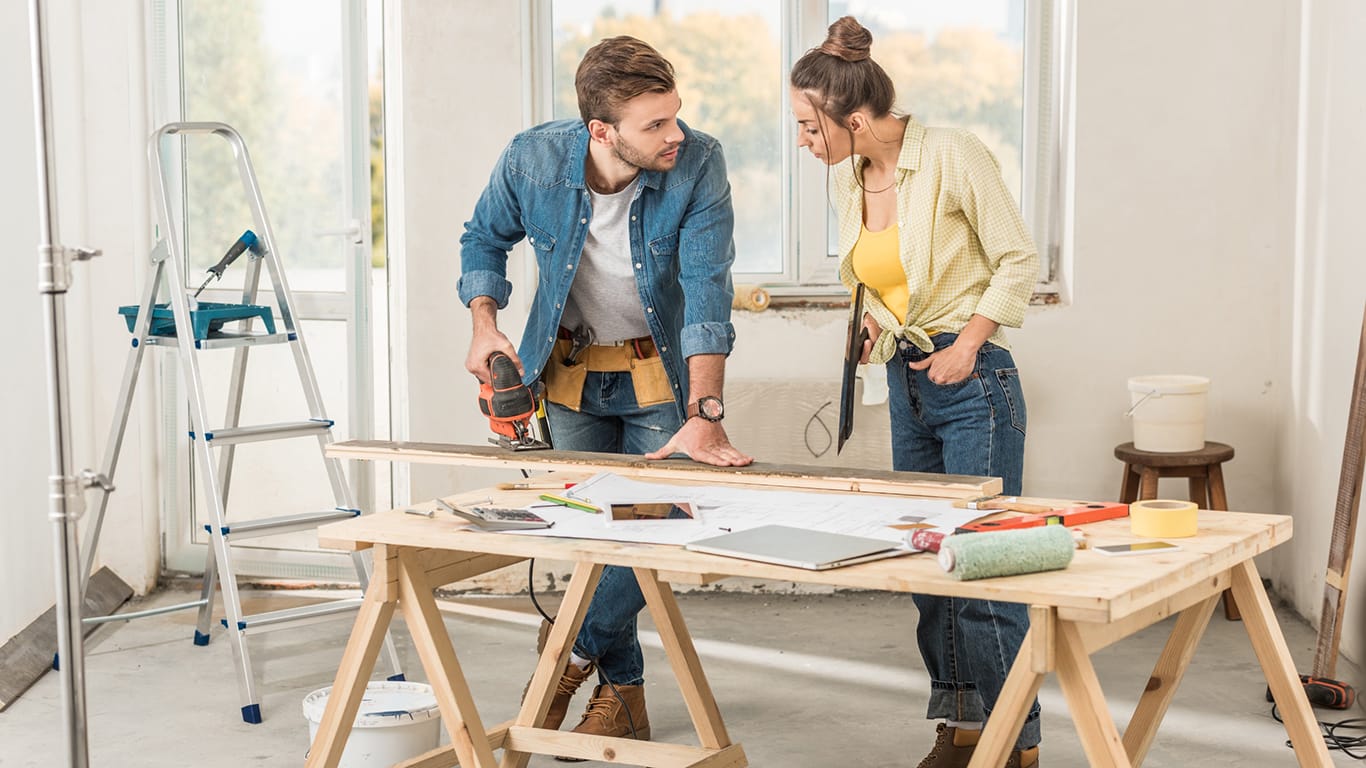To help you assess the long-term value and potential appreciation of a property, we asked real estate investors and CEOs for their expert insights. From considering square footage for higher returns to evaluating proximity to developing infrastructure, here are the top seventeen factors these professionals consider. Here are 17 key factors to consider for assessing property’s long-term value and appreciation potential:
- Consider Square Footage for Higher Returns
- Assess Broader Economic Factors
- Evaluate Renovation and Improvement Potential
- Analyze Property Characteristics and Features
- Prioritize Prime Location for Appreciation
- Examine Micro-Climate Zones for Value Growth
- Monitor Local Market Trends
- Research Neighborhood Safety
- Review Size and Floor Plan
- Focus on Location’s Long-Term Prospects
- Investigate Future Urban Development
- Understand Property Taxes Impact
- Check Quality of Local Schools
- Study Zoning and Development Plans
- Factor in Property Repair Costs
- Consider Aesthetic Value
- Evaluate Proximity to Developing Infrastructure
Consider Square Footage for Higher Returns
Square footage matters. For example, I rent by-the-room to college students, which means the bigger a property is, the more bedrooms I can add. This directly translates into higher returns. Remember: it’s a lot easier to convert interior rooms into extra bedrooms or even add internal walls than to expand the outside of a property.
Ryan Chaw, Founder and Real Estate Investor, Newbie Real Estate Investing
Assess Broader Economic Factors
I consider the broader economic factors at play. Things like job growth, interest rates, and overall economic health can greatly influence property values. If an area is experiencing steady job growth and low unemployment, that’s a great sign. It means more people will be looking to move there and buy homes, which drives up demand and prices. On the flip side, if a region is struggling economically, with businesses closing and jobs being lost, that can put a damper on the housing market.
Mike Roberts, Co-Founder, City Creek Mortgage
Evaluate Renovation and Improvement Potential
The potential for renovation or improvement can greatly impact a property’s long-term value and appreciation. A property with the potential to add more square footage, update outdated features, or improve curb appeal can be an attractive investment opportunity. However, it is crucial to thoroughly research and consider the cost of renovations and improvements before making a purchase decision.
A well-planned and executed renovation project can significantly increase a property’s value over time, making it a profitable venture in the long run. Additionally, keeping up with regular maintenance and periodic updates can help maintain a property’s value and prevent depreciation.
John Swann, Founder & CEO, John Buys Your House
Analyze Property Characteristics and Features
The specific characteristics of a property, such as its age, condition, and features, can also influence its long-term value and potential for appreciation. A newly-built property may have more modern amenities and higher energy-efficiency standards, making it more attractive to buyers in the future. On the other hand, an older property with unique architectural elements or historical significance may appreciate due to its charm and character.
When evaluating a property’s characteristics, it is essential to consider both the current market demand for certain features and how these features will hold up over time. For example, while a swimming pool may be desirable now, it could become a maintenance burden in the future that affects the property’s value.
John Jones, Real Estate Investor, Sell My House Fast Now
Prioritize Prime Location for Appreciation
Location is a crucial factor when assessing the long-term value and potential appreciation of a property. The location of a property can significantly impact its desirability and demand, which ultimately affects its value. A property in a prime location, such as near popular amenities, good schools, or with easy access to transportation, will likely appreciate in value over time. On the other hand, a property in an undesirable location, such as near noisy roads or in an area with high crime rates, may struggle to maintain its value and could even decrease in worth.
The location also plays a crucial role in determining rental-income potential for investment properties. A property in a desirable location will attract more tenants and command higher rental prices, leading to a better return on investment in the long run. Therefore, when evaluating a property, it is essential to consider its location and the potential for future growth and development in the surrounding area. The overall appeal of a neighborhood can also contribute significantly to a property’s value over time.
Jonathan Carcone, Principal, 4 Brothers Buy Houses
Examine Micro-Climate Zones for Value Growth
While assessing a property’s worth and its appreciation potential over time, I consider one unusual factor—its location within a micro-climate zone.
Micro-climates refer to small areas with different weather conditions from those of the surrounding region. This concept affects many things, such as agricultural viability or general habitability. In most cases, places in favorable micro-climatic regions experience better climates than others; they also provide steadier environments for cultivating certain plants while minimizing exposure to harsh weather events like hurricanes or tornadoes, leading to increased demand for homes and higher prices.
For instance, a vineyard may wildly thrive if located on unique agricultural opportunities supported by a micro-climate; hence, this can be attributed as one reason why such places appreciate much in terms of their value besides being attractive to particular niche markets because they offer reasonable grounds for growing specialty crops which cannot be grown elsewhere quickly. Therefore, taking note of these localized weather systems gives you an upper hand in identifying hidden appreciation potentials when investing in real estate.
Johnny Austin, Owner, Sell My House Now LLC
Monitor Local Market Trends
Understanding the local market trends is crucial when evaluating the long-term value and potential appreciation of a property. I pay close attention to the historical price trends in the neighborhood and the rate at which the area is developing. For instance, properties in up-and-coming neighborhoods often see a significant increase in value as new businesses and services move in.
This was evident in one of my investments, where a once-overlooked neighborhood saw property values skyrocket following the opening of several trendy cafes and a new tech hub. Keeping an eye on these trends ensures I make informed decisions that yield long-term benefits.
Jordan DeGusipe, Licensed PA Realtor, RE/MAX Professionals
Research Neighborhood Safety
The safety of a property and its surrounding neighborhood can also play a significant role in determining its long-term value. Properties located in areas with lower crime rates are often more desirable to buyers, as they offer peace of mind and a sense of security. By contrast, properties situated in high-crime areas may have lower values and appreciation potential.
When considering a property’s location, it is crucial to research the crime rates in the area, including any recent trends or changes. It could be beneficial to visit the neighborhood at different times of day to get a better understanding of the overall safety and security of the area.
Alex Capozzolo, Co-Founder, Brotherly Love Real Estate
Review Size and Floor Plan
The size and floor plan of a property play a significant role in determining its long-term value and potential for appreciation in the real estate market. A larger property that offers more usable living space, such as additional bedrooms, expansive family areas, or open-concept layouts, tends to attract a higher resale price, appealing to a broader range of buyers. Furthermore, properties with well-thought-out designs that enhance functionality, like ample storage solutions and versatile spaces, can greatly enhance a home’s marketability.
When assessing a property’s value and its potential for appreciation, it’s essential to take into account not only the physical dimensions but also how well the layout supports modern living needs, family dynamics, and lifestyle preferences. A thoughtfully designed space can make a lasting impression and significantly impact future resale opportunities.
Mary Sullivan, Business Owner, Company That Buys Houses
Focus on Location’s Long-Term Prospects
When buying a home, we usually get caught up by the property’s current market value and whether it fits our budget. While that is important, you must also pay equal attention to the property’s long-term value. A home with good long-term prospects will likely fetch you a higher price when you decide to sell, earning you a profitable return on investment (ROI).
To figure out if a home has potential appreciation potential, I always refer to this age-old adage: “location, location, location.” This is because homebuyers are often attracted to properties in desirable locations, keeping the demand for these properties high even in a market downturn. This increased demand drives up property prices, potentially earning the owners a tidy profit when it comes to selling.
Here are key factors to look for in a location to ensure the long-term value of a property:
- Quality of local schools
- Proximity to amenities
- Safety and crime rates
- Future development plans
- Employment opportunities
If the location of the property ticks these points, then you can rest assured that the property’s value will increase over time.
Robin Cherian, CEO, The Canadian Home
Investigate Future Urban Development
Future urban development is a key factor in assessing property value. Properties in areas with planned commercial and residential projects tend to appreciate as these developments bring enhanced infrastructure and amenities. Researching municipal development plans can help identify such opportunities, ensuring that investments yield significant long-term returns.
Erik Wright, CEO, New Horizon Home Buyers
Understand Property Taxes Impact
Property taxes are a critical factor to consider when assessing the long-term value of a property. These taxes, typically levied by local governments, can vary significantly based on location and can play a substantial role in a property’s overall financial landscape. High property taxes can greatly affect not just the affordability of a property but also its attractiveness to potential buyers. For those looking to purchase, steep property taxes may deter interest or lead to lower offers, as buyers often factor in these costs when determining what they can afford.
It is essential to conduct thorough research on the property-tax rates in the area, including a historical review of how these rates have changed over time and any future projections. Areas with consistently high property taxes might experience slower appreciation potential, as potential buyers often seek properties in locations where they can feel financially comfortable.
Conversely, properties situated in regions with more manageable tax rates may not only attract more buyers but could also see greater increases in value over time. Understanding the implications of property taxes can help buyers make more informed decisions and navigate the real estate market more effectively.
Baxter Fricks, Founder & CEO, Cardinal House Buyers
Check Quality of Local Schools
The quality of schools in a particular area can affect the long-term value and potential appreciation of a property. Families with children often prioritize living in areas with reputable schools, which can drive up demand and property values. On the other hand, properties located in areas with under-performing or declining schools may have a lower potential for appreciation. Investors should research and consider the reputation and performance of schools in the surrounding area when assessing the long-term value of a property.
Danny Colacicco, Founder & CEO, Panda Pro Home Buyers
Study Zoning and Development Plans
As the owner of a construction-and-roofing company, one key factor I always consider when assessing a property’s long-term value and potential appreciation is the zoning and local development plans. This often-overlooked aspect can have a significant impact on a property’s future worth and desirability.
Understanding the local zoning regulations and upcoming development plans provides crucial insights into how an area might transform over time. For instance, a residential property in an area zoned for mixed-use development could see substantial appreciation if commercial spaces start popping up nearby, increasing convenience and potentially property demand.
From my experience in the construction industry, I’ve seen how changes in local infrastructure, such as new roads, public transportation improvements, or the addition of community amenities, can dramatically boost property values. By staying informed about these plans and considering how they might affect a property’s future prospects, investors and homeowners can make more strategic decisions about where to put their money for long-term growth.
Tyler Poole, Owner, White Oaks Construction
Factor in Property Repair Costs
You’ve got to consider the overall repair of the property and how much you’ll need to spend to get it up to scratch. There are key elements in a property that are major expenses and actually have a clear lifespan. Take a roof, for example. If it’s reaching the end of its lifespan, it’ll take a $15,000-$20,000 expense on average to replace. You’d need to factor that cost into your calculations.
Now, if you intend to flip the property without replacing the roof, you’d need to be more conservative with your calculations. Buyers would expect to be compensated for the hassle and mess, plus they’d always calculate costs on the higher end. I think here you need to weigh the appreciation of the property with and without the upgrades or maintenance.
Daniel Kepreotes, Founder and Managing Director of ADKO Trade Services, ADKO Roofing
Consider Aesthetic Value
As a real estate investor and former CEO of a real estate brokerage that transacted over $3 billion in purchases, I’m often analyzing long-term value and appreciation scenarios. One differentiated factor that I always consider: aesthetic value. How a property looks and feels has a huge impact on value, yet it’s rarely included in a typical pro-forma evaluation. But that makes no sense! Renters want clean design, well-proportioned layouts, and light-filled spaces. Design can be the difference between a long-term vacancy and an immediate rental.
In my experience, better design can account for 20% higher rents for spaces with similar specifications. Performing a detailed valuation in a spreadsheet and ignoring aesthetics can lead to wildly incorrect predictions—in both undervaluation and overvaluation.
I recently invested in a 5-unit multi-family property. All the 1-bedroom and 1-bathroom rental comps pointed towards a predictable rent for the area. However, my property consisted of separated bungalows without shared walls and surrounding windows facing greenery. The look and feel of each unit was nicer than the comps in a way that was difficult to quantify, so I valued each rent higher than the market despite paying a price that reflected standard multi-family rents. As the units rent out, it’s starting to outperform the market due strictly to its design.
Judd Schoenholtz, Co-founder & CEO, Deferred
Evaluate Proximity to Developing Infrastructure
One key factor we consider when assessing a property’s long-term value is its location relative to developing infrastructure. Properties close to new schools, hospitals, and transportation tend to appreciate more. For instance, we’ve invested in homes near upcoming transit projects, which have seen significant appreciation post-completion. This strategy not only ensures a solid return on investment but also attracts buyers looking for convenience and connectivity in their home purchases.
Brandon Shearin, Founder and CEO, Ready House Buyer




